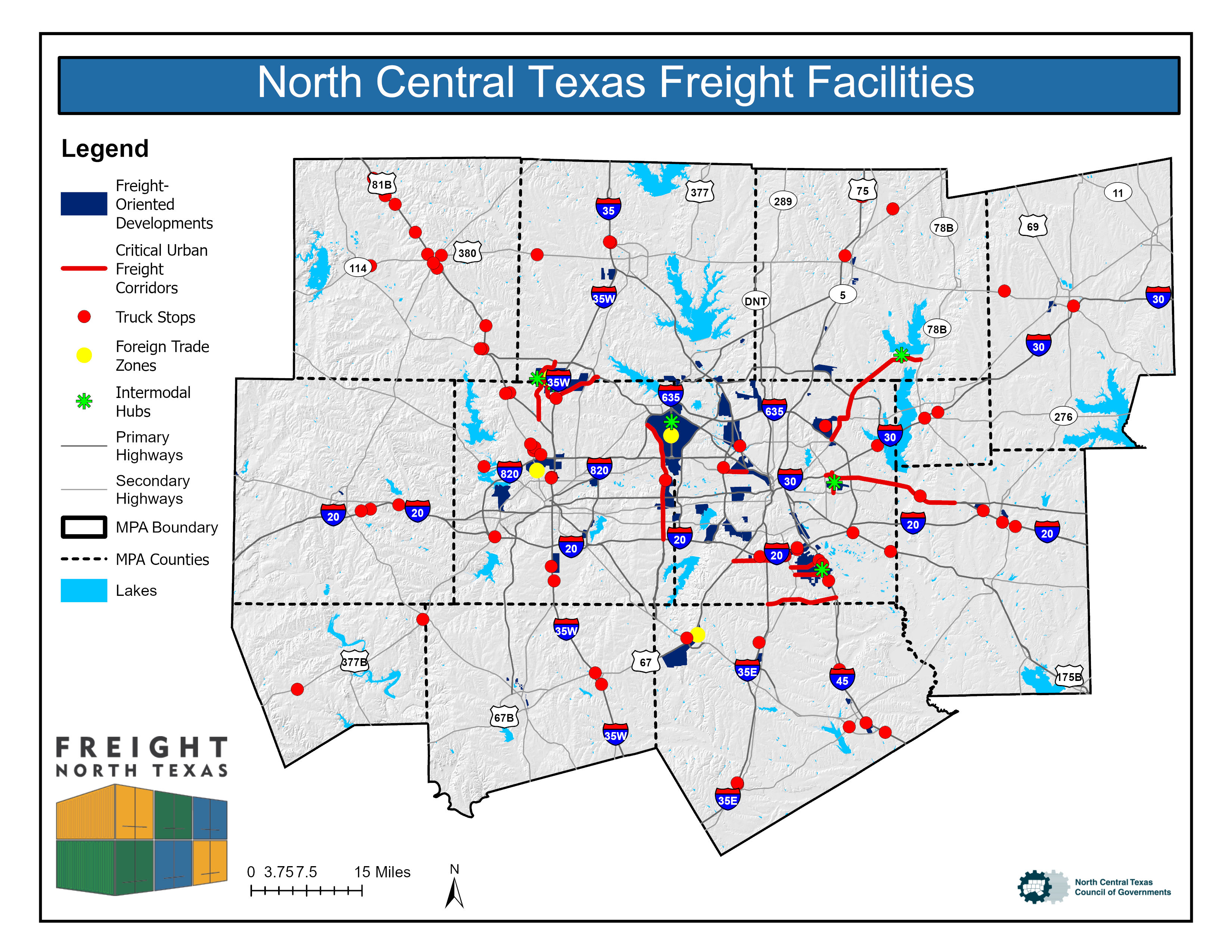General Freight Planning
NCTCOG’s 12-county metropolitan planning area contains several key freight facilities. These include intermodal facilities, air cargo terminals, Foreign Trade Zones, pipeline terminals, and numerous industrial parks. 
There are four notable intermodal facilities located in the region, BNSF Railway’s Intermodal and Carload Transportation Center located near Alliance Airport, Canadian Pacific Kansas City’s (CPKC) Wylie Intermodal Terminal, and Union Pacific Railroad’s (UPPR) intermodal facilities in Mesquite and Southern Dallas County.
The International Inland Port of Dallas (IIPOD) is a 7,500-acre area located in South Dallas. It contains Union Pacific Railroad’s South Dallas intermodal facility as well as warehousing facilities for companies such as Amazon, Ace Hardware, FedEx, Home Depot, Kohls, Procter & Gamble, Sprouts, Unilever, and Walmart.
In the region, most air cargo is handled by two airports, DFW International Airport and Alliance Airport. Other regional airports in the region carry air cargo, staff are currently conducting site visits to assess the state of freight facilities at these airports.
DFW International Airport is centrally located in the region and handles both passenger and air cargo. It currently ranks 2nd in passenger movement and 9th in air cargo.
Alliance airport is a freight-focused airport. Notable tenants include Amazon, BNSF Railway, the Drug Enforcement Administration (DEA), FedEx, and Rolls Royce.
Foreign Trade Zones (FTZ) are designated areas within the country where certain trade barriers, such as customs duties and taxes, are reduced or eliminated to promote international trade and attract foreign investment. These zones are designed to facilitate importation, exportation, and re-exportation of goods without being subjected to the standard customs regulations and duties that would apply in the rest of the country.
The four FTZs in the region allow companies to ship products to the region directly from other countries. This process bypasses long processing times at major US points of entry. An FTZ not only saves money for companies utilizing them, but also benefits the region through job creation, ensuring goods arrive more quickly, and reducing product cost. The table below lists the region’s FTZs and national ranking among the 195 US foreign trade codes
Pipelines and pipeline facilities in the region transport petroleum, natural gas, and other hazardous materials. The oil and natural gas industry is an integral component of the regional economy. The Barnett Shale formation, located in the region, is an onshore natural gas field stretching from the city of Dallas to the west and south. The Barnett Shale covers 5,000 square miles and 8 of the 12 Metropolitan Planning Area counties.
Pipelines are considered the safest and most efficient way to move oil and gas products.
Throughout the region, pipelines are used to transport gasoline, natural gas, water, and other fuel oils. Regional commercial pipelines total approximately 16,000 miles. This extensive network, which operates mainly below ground, transports approximately 29.3 million tons annually in North Central Texas, second only to trucks in tonnage transported
Staff Contacts: Jeff Hathcock, Mike Johnson, Dan Lamers
